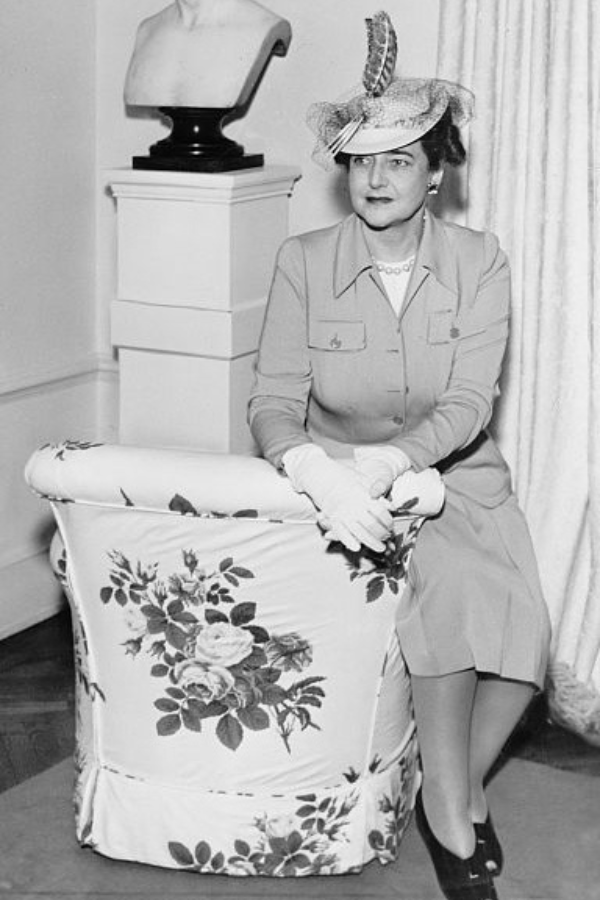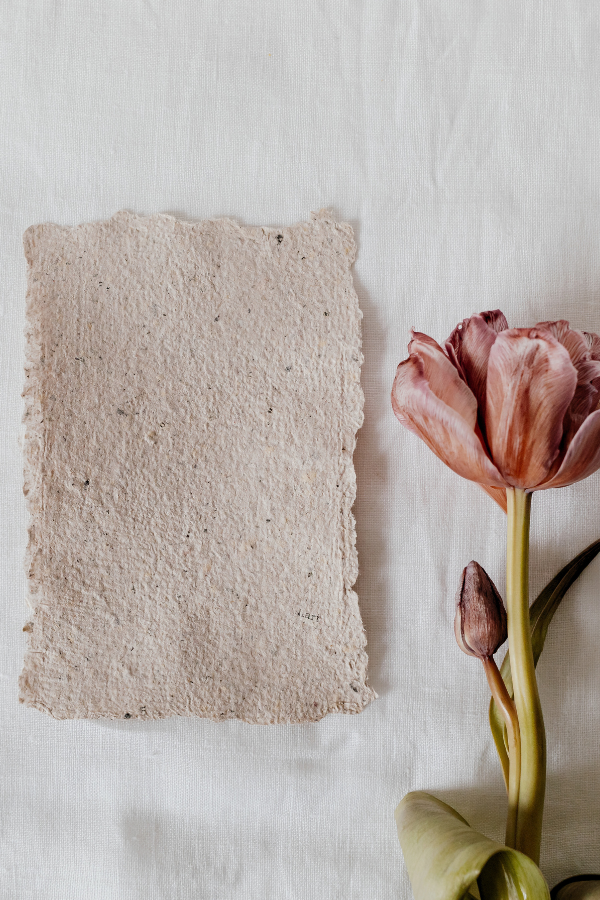
Interior Design of the 20th Century: How Dorothy Draper Made History
Summary
Reflection Questions
Journal Prompt
Dorothy Draper was an American interior decorator who—through her prolific career—completely transformed the industry. With a stylistic approach that was intensely anti-minimalist, Draper embraced exuberant colors, large prints, and a fusion of classical elements—all of which defined the Hollywood Regency style—an approach now synonymous with her name. From department stores to hotel lobbies, her work was featured heavily in Architectural Digest and other important publications. She also founded the Dorothy Draper Company and was a shrewd businesswoman. Dorothy Draper was a true artist and an influential tastemaker whose impact we cannot overstate. In this article, we trace her origins and celebrate her legacy. Read on to learn more.
Background on Dorothy Draper

Born into the affluent Tuckerman family in Tuxedo Park, NY, Dorothy Draper’s early life reflected the epitome of upper-class privilege. Her exposure to art, culture, and luxury laid the groundwork for her future career. Though she was educated primarily at home, Draper’s upbringing was a wellspring of inspiration—providing her not only with connections with the most influential tastemakers but also an intimate understanding of historical styles.
Draper’s Design Philosophy and Style
Dorothy Draper’s indomitable influence on interior design can be encapsulated in her signature “Modern Baroque” style. At a time when minimalism dominated the design landscape, Draper’s approach was a revolutionary departure. She was not just a decorator. Draper was a pioneer whose vision shaped the very foundation of this profession.
The cornerstone of Draper’s high style lay in her fearless embrace of dramatic color schemes and oversized details. Her trademark cabbage-rose chintz, vibrant hues, and unconventional combinations challenged the prevailing norms of her era. Black and white tiles, rococo scrollwork, and baroque plasterwork became the hallmarks of her designs—creating a visual language that spoke volumes against the muted backdrop of minimalism.
Fuel your creative fire & be a part of a supportive community that values how you love to live.
subscribe to our newsletter
*please check your Spam folder for the latest DesignDash Magazine issue immediately after subscription

In an era when women were seldom found in the workforce, the Draper touch defied conventions. In 1925, she founded the Architectural Clearing House—arguably the first official interior design business. This was an unprecedented feat that paved the way for the professionalization of the field. Her clientele sought her out not just for her design proficiency but for her social cachet.
Her predilection for grandeur extended beyond private residences, as Draper preferred hospitality projects. Projects like New York’s Sutton Place and the Hampshire House on Central Park South showcased her ability to turn neglected areas into chic, sought-after spaces.
In the 1940s, Draper’s influence reached its zenith. She created masterpieces throughout the interiors of The Fairmont and the Mark Hopkins in San Francisco as well as the iconic Greenbrier Hotel in West Virginia. Her penchant for the unexpected and her brilliant sense of color made her America’s leading trendsetter.
Key Projects and Their Impact
The Greenbrier Hotel in West Virginia
The Greenbrier Hotel in White Sulphur Springs, West Virginia remains one of Draper’s most iconic projects. Commissioned to breathe new life into the hotel after its wartime service as a hospital, her bold and flamboyant design choices—characterized by vibrant colors, oversized floral patterns, and an unapologetic embrace of luxury—turned the hotel into a masterpiece of maximalist design.
Draper’s approach to the redesign of The Greenbrier was groundbreaking for its time. She moved away from the more subdued and traditional interiors often seen in luxury hotels of that era. Draper’s design philosophy emphasized creating spaces that were not only visually stunning but also comfortable and inviting.
One of the most notable aspects of her work at The Greenbrier is the use of her signature color palettes. She utilized bright, bold colors such as vibrant greens, pinks, blues, and yellows, which she believed would enhance the mood and atmosphere of the spaces. Draper also incorporated oversized floral patterns, stripes, and checks, which added a sense of playfulness and whimsy to the hotel’s interiors.
accepting new mastermind applications
For Fall ’24
Get unstuck. Find fulfillment. Rediscover your passion for the design industry we all love! Be one of the first to join our next exclusive, curated cohort of creative women and find support like you’ve never had before.

Draper’s design for The Greenbrier also included custom furniture, unique wallpapers, and decorative elements that complemented the grandeur of the hotel’s architecture. She paid meticulous attention to every detail, from the design of the carpets to the selection of the artworks—ensuring that each element contributed to the overall aesthetic vision.
The lobby of The Greenbrier is particularly noteworthy—characterized by its dramatic use of color and bold patterns. Draper’s design transformed it into a lively and welcoming space, setting the tone for the rest of the hotel. Her work extended to other areas of the hotel—including the dining rooms, guest rooms, and public areas, each reflecting her distinctive style.
Dorothy Draper’s work at The Greenbrier not only revitalized the hotel but also cemented her status as a trailblazer in interior design. Her designs at The Greenbrier continue to be celebrated for their innovative approach and lasting influence on the field of interior decoration. The Greenbrier remains a testament to Draper’s vision and creativity—retaining much of her original design elements to this day, and is considered a prime example of her flamboyant and exuberant style.
Her work at The Greenbrier Resort made her an icon of the design world and perhaps the most influential tastemaker of her day.
The Carlyle Hotel in New York
Dorothy Draper’s work at The Carlyle Hotel in New York City is another testament to the influential style of this fabulous decorator. The Carlyle, a historic luxury hotel located in Manhattan’s Upper East Side, opened in 1930 and quickly became a symbol of elegance and sophistication. Draper was commissioned after World War II to redecorate the hotel, and her work there exemplified her signature modern sense of style—marked by bold colors, dramatic patterns, and a blend of modern and classical elements.
Draper’s approach to The Carlyle’s interiors reflected her philosophy of creating spaces that were both visually striking and inviting. She was known for her ability to combine various styles and periods, bringing them together in a harmonious and often dramatic fashion. At The Carlyle, she utilized a color palette that was both rich and vibrant, employing a variety of textures and patterns to create depth and interest in each space.
Other Significant Projects by Draper
- Hampshire House Apartment Hotel, New York
- Metropolitan Museum of Art Cafeteria, New York
- Palácio Quitandinha, Rio de Janeiro
- Arrowhead Springs Hotel, California
- Fairmont Hotel, San Francisco
Dorothy Draper as a Trailblazer for Women in Design
Dorothy Draper’s pioneering “Modern Baroque” style—marked by bold colors, oversized details, and eclectic combinations—challenged the minimalist trends of the 20th century. Her influential designs—featuring vibrant cabbage-rose chintz, black-and-white tiles, and baroque elements—redefined interior aesthetics.
Draper’s approach—advocating for the psychological impact of design—elevated the role of interior designers. She also broke gender norms and turned decorating into a respected profession. Draper’s success paved the way for other women in design —inspiring them to enter and thrive in a field where they were previously underrepresented.
Final Thoughts About Dorothy Draper’s Contributions to Interior Design
Modern designers still draw inspiration from her audacious use of color, pattern, and scale—as well as her ability to merge classical elements with contemporary flair. Draper’s legacy encourages today’s designers to embrace bold individuality, challenge norms, and—above all—recognize the profound influence design can have on shaping not just spaces but cultural perceptions.
By Anila Hasnain.








